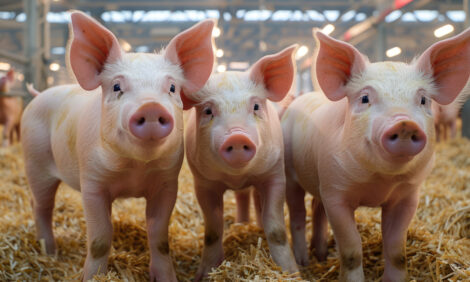



Meat Quality vs Costs of Production: which way should the industry go?
By Jeff Wood, Professor of Food Animal Science, University of Bristol and presented at the 16th Annual JSR Technical Conference - Both meat quality and costs of production (COP) are clearly important for the future, but whereas reducing COP is a clear objective for BPEX, meat quality seems to have received less attention. My aim in this talk is therefore to make the case for Quality.
Meat quality vs COP
COP is currently lower in most EU competitor countries than in UK and is considerably lower in major pork producing countries outside EU, such as Canada, USA and Brazil. Low raw material costs are attractive to UK processors and retailers, so in order to compete, the British industry should differentiate its' products and offer higher Quality.
 Jeff Wood Jeff Wood is Professor of Food Animal Science and head of the Division of Farm Animal Science in the School of Veterinary Science at Bristol. Jeff joined the Meat Research Institute at Bistol in 1971 as a postdoctoral student following his PhD at Cornell University, USA. Before that he was at Newcastle University where he obtained his BSc in Agriculture. He has published over 200 papers on the subjects of body composition, fat metabolism, nutritional value and meat quality in farm animals.
|
The case for Quality
The Quality of food, not simply the amount, is becoming more important for a growing proportion of people in Britain. We are starting to see large price differentials appearing. Recent examples at Tesco in Weston-super-Mare:
- Dry cured Danish bacon £2.48 per 250g
- Standard Danish bacon £1.58
- British Wiltshire cured £2.18
- Outdoor bred bone-in pork chops £5.37 per kg
- Fresh British bone-in pork chops £4.88 per kg
This interest in Quality is encouraged by food writers who bemoan the passing (as they see it) of the traditional taste of pork. Non-sensational writers such as Delia Smith and Nigel Slater blame "a current trend to leanness".
Many of the components of Quality that arise in these discussions of what consumers want can be provided by making changes in production and during processing. There will be a cost to these which will be matched (hopefully) by higher prices.
What is Quality?
Quality refers firstly to the taste of pork and bacon, with tenderness, juiciness and flavour being the most important characteristics.
Quality also includes considerations of how the animal is reared, with "outdoor production", "free-range" and "organic" having positive connotations.
Hormones, antibiotics and "intensive" have negative connotations. The British pig industry can provide the right blend of these characteristics to meet modern demands.
High Quality also refers to country of origin. In a recent research project with colleagues in France, Sweden and Denmark, consumers in all countries said that their own pork was best. They maintained that they would buy home - produced pork in preference to imported pork. Reasons included higher standards, more adherence to the rules and better "traceability".
Improving Quality during production
In this part of my talk, I want to give some examples from our own research at Bristol of how Quality can be improved by making changes in production.
Reducing protein in the later stages of growth, from 21% to 17%, has a marked effect on fat deposition within muscle itself - marbling fat. There was no significant increase in P2 fat thickness. The tenderness and juiciness of pork steaks were significantly increased because of this extra marbling fat.
Including 6% linseed for 20 days before finishing increased the nutritionally beneficial omega-3 fatty acids, by 3-fold. There is not yet a market for "nutritionally enhanced" pork in Britain (there is in other countries) but the supermarkets are interested.
Including 20% sugar beet feed (SBF) in the diet for 30 days before finishing produced "abnormal odour intensity" (boar taint) in pork from entire male pigs. Most of the major pork exporting countries castrate entire male pigs so can guarantee freedom from boar taint.
Our studies of traditional and modern breeds show few differences in eating quality but we recognise the positive image that breeds such as Berkshire, Tamworth and Gloucester Old Spot have.
Improving Quality during processing
Tenderness can be improved greatly by events during processing. These include pelvic suspension of the carcass and increasing the ageing/conditioning time to beyond 10 days. Use of marinades which increase the water holding characteristics of pork are extremely effective at raising tenderness. It is estimated that 80% of US pork is marinated.
Some years ago, the MLC issued the Blueprint for British Pork Quality ,which showed how production and processing treatments could be combined to reliably raise the level of eating quality. All the Supermarkets incorporate these ideas to some extent in their standards. A new Blueprint should now be produced, updating this concept.
Using these ideas, producers can form partnerships with abattoirs and processors to produce High Quality Pork. The benefits can then be demonstrated to retailers and special contracts negotiated.
Conclusions
COP and Meat Quality are both important for the future but the time is right now for BPEX to give Quality more emphasis.
Quality incorporates several components of importance to consumers, from taste to the way the meat is produced.
Quality can be improved during production and processing and a case made to retailers for specific "branded" pork products which will put British pork ahead of the competition.
Source: JSR Genetics - October 2005









